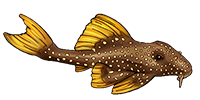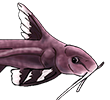Breeding habits similar or identical to L46?
Breeding habits similar or identical to L46?
Hi, I’m doing a breeding project at college and want to breed something with very similar if some the same breeding habits as L-46.
I obviously cant get any L-46 as they are well out of the college budget but other than that I have pretty much any resources available that I could possibly need.
Basically I was to breed a fish that would simulate the same procedure as breeding L-46. Preferably something that is not too difficult, reasonably easy to get hold of and something that looks good too!
I considered L-262 But was wondering what else there is out there...
Also any tips would be much appreciated, I have a small amount of practical knowledge breeding loricariidae and a reasonable amount of theoretical knowledge...
I obviously cant get any L-46 as they are well out of the college budget but other than that I have pretty much any resources available that I could possibly need.
Basically I was to breed a fish that would simulate the same procedure as breeding L-46. Preferably something that is not too difficult, reasonably easy to get hold of and something that looks good too!
I considered L-262 But was wondering what else there is out there...
Also any tips would be much appreciated, I have a small amount of practical knowledge breeding loricariidae and a reasonable amount of theoretical knowledge...
- Farid
- Posts: 404
- Joined: 20 Sep 2007, 22:29
- My cats species list: 1 (i:1, k:0)
- Location 1: Switzerland/Zurich
- Contact:
hi,
how about L134? i would just check to get really adult pairs otherwise it will take ages until they grow up.
farid
how about L134? i would just check to get really adult pairs otherwise it will take ages until they grow up.
farid
My cats L2,49,47,46,L66,134,181,189,200,201,204,205,208,260,397,LG6,Parotocinclus recife/halderoi,A.ranunculus,Peckoltia sp. "rio palacio",Pseudohemiodon platycephalus/lamina,Hemiodontichthys acipenserinus,Rineloricaria lanceolata,St.festivum,Akysis vespa,Bunocephalus corracoides,Synodontis multipunctatus/grandiops, C.panda,adolfoi,cruziensis
- apistomaster
- Posts: 4735
- Joined: 10 Jun 2006, 14:26
- I've donated: $90.00!
- My articles: 1
- My cats species list: 12 (i:0, k:0)
- My Wishlist: 1
- Location 1: Clarkston, WA, USA
- Location 2: Clarkston, WA, USA
- Interests: Aquaculture and flyfishing
- Barbie
- Expert
- Posts: 2964
- Joined: 03 Jan 2003, 23:48
- I've donated: $360.00!
- My articles: 1
- My images: 15
- My catfish: 2
- My cats species list: 58 (i:0, k:0)
- Spotted: 8
- Location 1: Spokane, WA
- Location 2: USA
L260 are the catfish of the month this month, also ;). As someone that breeds both fish, the L260 are definitely similar in their needs to H. zebra. If anything, zebra are more forgiving than L260 in regards to a proper rainy season. I used L260 as my "warm up" fish for working with my H. zebra.
L134 might look like H. zebra, but from everything I've read they require a much different stimulation to spawn than you'd be using for H. zebra. I wouldn't know, as I have a colony that is only just now old enough to attempt to work with ;).
Barbie
L134 might look like H. zebra, but from everything I've read they require a much different stimulation to spawn than you'd be using for H. zebra. I wouldn't know, as I have a colony that is only just now old enough to attempt to work with ;).
Barbie
-
pleco_farmer
- Posts: 127
- Joined: 03 Apr 2004, 00:44
- I've donated: $50.00!
- Location 1: Wash, DC, USA




